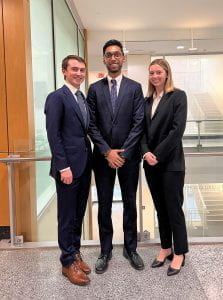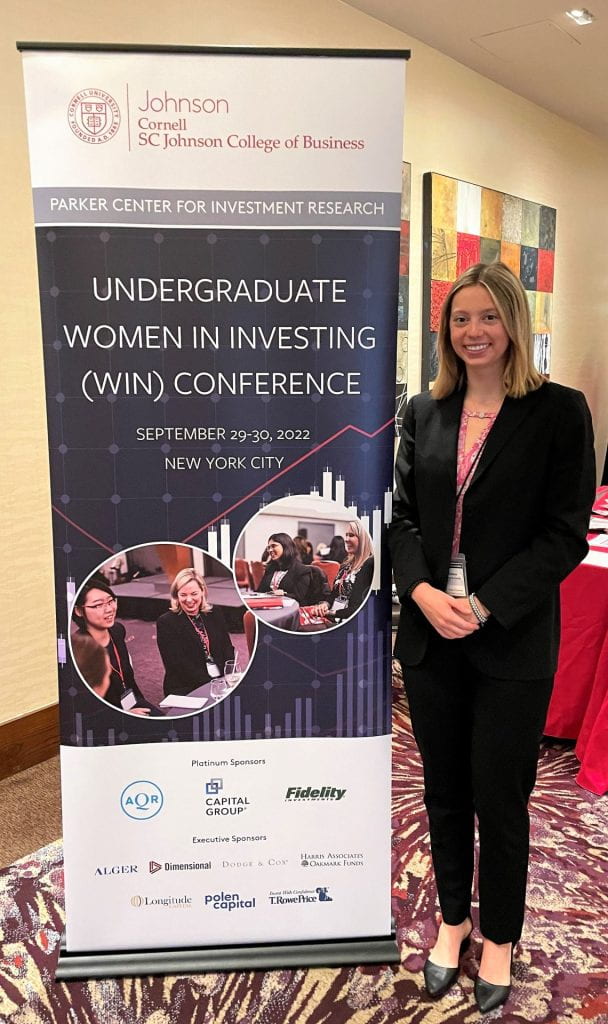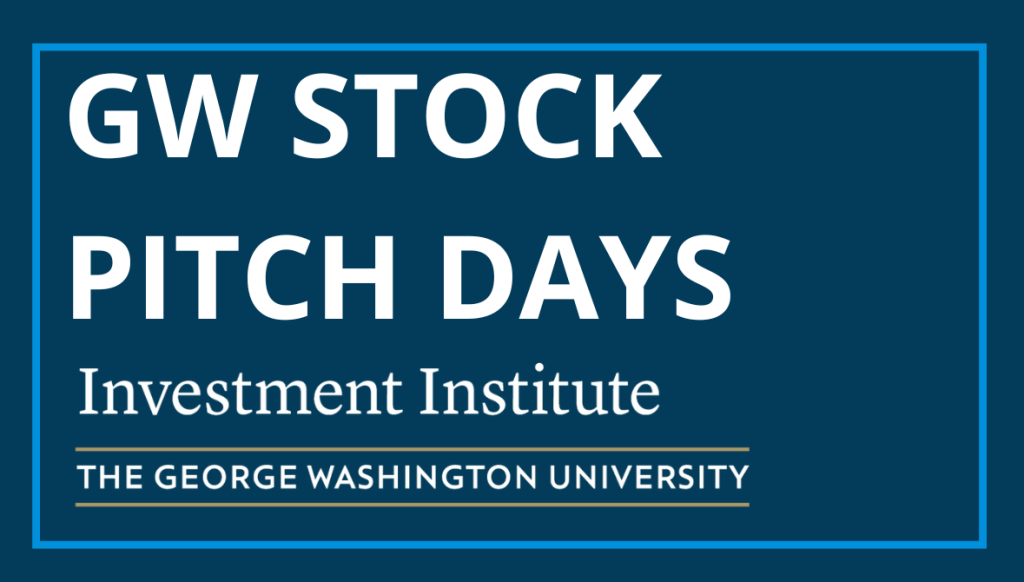This guest blog post is written by Rhys Chambers, a sophomore studying Computer Science at the GW School of Engineering and Applied Sciences. We greatly appreciate Strategic Investment Group for sponsoring this activity.
I was excited and grateful to represent The George Washington University (GW) and the GW Investment Institute at this year’s Cornell Women in Investing (WIN) Conference in New York City. The WIN conference aims to encourage young women to pursue careers in investing. It is a combination of panels with professionals in the industry, networking sessions with recruiters, and a stock pitch competition of ten undergraduate teams from different universities around the country. I’m thrilled to be sharing my experience, and I hope to encourage more young women from GW to attend the conference next year!
The trip began at Union Station in Washington, DC. I’m from Colorado, and it was my first time taking the train between two major cities on the east coast, so I had a wonderful time watching the towns roll by as I took breaks from my homework.
That evening, WIN hosted a networking event where I met the other conference attendees. I met young women from Cornell, Carnegie Mellon, Georgia Tech, and Claremont McKenna, and we discussed our involvement in investment funds on our respective campuses. Some of the attendees of the conference were members of campus funds that managed their university’s endowment (just like the GW Investment Institute Student Investment Funds) or had their own lens through which they created their fund’s portfolio. After a whirlwind of an hour meeting the other women, Lakshmi Bhojraj ––the Executive Director of Cornell’s Parker Center for Investment Research––made opening remarks and introduced Cameron McElroy, the executive director of AQR Capital Management. She kickstarted the conference with an empowering speech about being a woman in the investment industry, emphasizing that hard work always beats talent. She reminded us to go above and beyond, even on the little projects that may seem futile and irrelevant.
After Cameron’s remarks, the group headed to dinner hosted by Fidelity. Our keynote speaker, Courtney Grimble is an Environmental, Social and Governance (ESG) Analyst at Fidelity, and she shared with us her path from a customer service representative for Fidelity to an analyst. Her key takeaways were to embrace failure and to find strong female mentors early in our careers. I was really impressed by Courtney’s journey and struck by how passionate she was about her position at Fidelity. The same zeal that Courtney expressed with regard to her career was a common thread throughout the rest of the conference panelists.
The following morning began with a lively start to the stock pitch competition portion of the conference. Only teams from ten schools participated in the stock pitches. Since I was not part of a pitch team this year, I was in the fortunate position to be able to float between the two rooms hosting the pitches. Teams pitched companies such as Celsius, Intuit, TopGolf, Nutrien Ag Solutions, and Staar Surgical, and I was impressed by the teams’ ability to effectively communicate the essential information within the 15 minute time limit. All of the teams had a deep understanding of all synergies of the company that they were pitching and were able to respond to even the most difficult of the judges’ questions.
After the pitch competition, we participated in speed networking rounds with firms sponsoring the conference. These firms included Alger, AQR Capital Management, Capital Group, Dimensional Fund Advisors, Dodge & Cox, Fidelity, Harris Associates, Longitude Capital, Polen Capital, and T. Rowe Price. These networking rounds were a great opportunity to learn more about these firms’ niches and understand the structure of their summer analyst internship programs.
The conference wrapped up with a couple of panels. The first of these panels was called Buy Side Roles: Investment Management, Quant Research, Client Facing and Other Roles on the Buy Side. The second panel was called How to Recruit Successfully in Research/Investment Management: What Companies Look For. The panelists consisted of a mix of analysts and portfolio managers of the aforementioned firms, and they shared valuable insight regarding recruiting methods and tips for our early careers. They expressed the hardships of working on Zoom over the past couple of years and shared tips for time management skills in this extremely demanding industry. Below are a few points that I would like to share, as I found them to be profound and relevant as I begin the early stages of my own career:
1. Be an independent thinker. Teams are composed of individuals with varying skill sets, and the strongest teams will consist of many different perspectives.
2. Remain curious about the world. Take the time to read about the things that interest you. Never stop learning, regardless of how old you are.
3. It’s okay if you don’t know the solution to a problem. Young professionals often try to prove themselves worthy, but it’s actually a good thing to admit when you don’t know the answer. There is always room to learn.
Before catching my train back to DC, I took a brief walk around Times Square and Rockefeller Center. Of course I had to grab a slice of pizza before I left, so I made sure to add that stop to my walk too!
I gained an immeasurable amount of knowledge and connections within the brief 24 hours of the Cornell WIN Conference. Not only did the conference offer invaluable career advice and present professional opportunities, but I also made strong connections with other women at universities across the country, with whom I have remained in contact since the conference. Panelists and attendees alike, these are the women who are and will be breaking the glass ceiling for women in the investing industry. I am so grateful for the opportunity to attend the conference, and I look forward to an enhanced GW presence in upcoming years.









